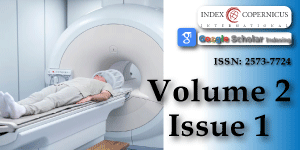Autologous grafts in radiotherapy received breast cancer patients
Main Article Content
Article Details
Copyright (c) 2018 Cihan YB.

This work is licensed under a Creative Commons Attribution 4.0 International License.
Lexer E. Fettgewebsverplanzung. In: Lexer E, editor. Diefreien Transplantationen. I. Teil. Stuttgart: Enke. 1919; 219-547.
Rigotti Gino, Alessandra Marchi, Paolo Stringhini, Guido Baroni, Mirco Galiè, et al. Determining the oncological risk of autologous lipo aspirate grafting for post-mastectomy breast reconstruction. Aesthetic Plastic Surgery. 2010; 34: 475-480. Ref.: https://goo.gl/WmvX7i
Panettiere P, Marchetti L, Accorsi D. Theserial free fat transfer in irradiated prosthetic breastre constructions. Aesthetic Plast Surg. 2009; 33: 695-700. Ref.: https://goo.gl/WvM66M
Yoshimura K, Sato K, Aoi N, Kurita M, Hirohi T, et al. Cell-assisted lipotransfer for cosmetic breast augmentation: supportive use of adipose-derived stem/stromal cells. Aesthetic Plast Surg. 2008; 32: 48-55. Ref.: https://goo.gl/ufRHqq
Kølle SF, Fischer-Nielsen A, Mathiasen AB, Elberg JJ, Oliveri RS, et al. Enrichment of autologous fat grafts with ex-vivo expanded adipose tissue-derived stem cells for graft survival: A randomised placebo-controlled trial. Lancet. 2013; 382: 1113-1120. Ref.: https://goo.gl/p2xY3z
Cordeiro PG, Pusic AL, Disa JJ, McCormick B, VanZee K. Irradiation after immediate tissue expander/implant breast reconstruction: outcomes, complications, aestetic results, and satisfaction among 156 patients. Plast Recon strSurg. 2004; 113: 877-881. Ref.: https://goo.gl/NLExJq
Biazus JV, Falcão CC, Parizotto AC, Stumpf CC, Cavalheiro JA, et al. Immediate Reconstruction with Autologous fat Transfer Following Breast-Conserving Surgery. 2015; 21: 268-275. Ref.: https://goo.gl/LAjqJ5
Kronowitz SJ, Robb GL. Radiation therapy and breastre construction: a critical review of the literature. Plast Reconstr Surg. 2009; 124: 395-408. Ref.: https://goo.gl/CYPHyC
Tallet Agnès V, Naji Salem, Vincent Moutardier, Pascal Ananian, Anne-Chantal Braud, et al. Radiotherapy and immediate two-stage breastre construction with a tissue expander and implant: complications and esthetic results. International Journal of Radiation Oncology Biology Physics. 2003; 57: 136-142. Ref.: https://goo.gl/b4aXiN
Salgarello M, Visconti G, Farallo E. Autologous fat graft in radiated tissue prior to alloplastic reconstruction of the breast: report of two cases. Aesthetic Plast Surg. 2010; 34: 5-11. Ref.: https://goo.gl/oBqkXZ
Rietjens M, De Lorenzi F, Rossetto F, Brenelli F, Manconi A, et al. Safety of fat grafting in secondary breastre construction after cancer. J Plast Reconstr Aesthet Surg. 2011; 64: 477-483. Ref.: https://goo.gl/84A4LT
Schäffler A, Schölmerich J, Buechler C. Mechanisms of disease: adipokines and breast cancer-endocrine and paracrine mechanisms that connect adiposity and breast cancer. Nature Clinical Practice Endocrinology&Metabolism. 2007; 3: 345-354. Ref.: https://goo.gl/NeG8y1

